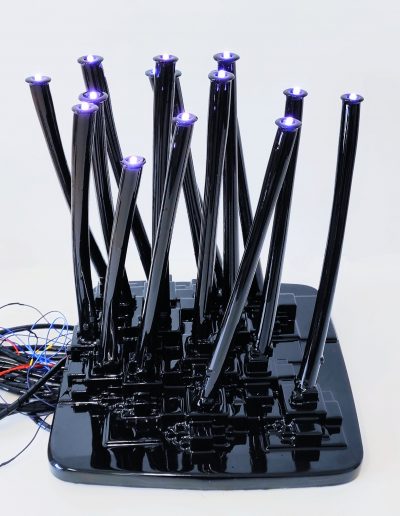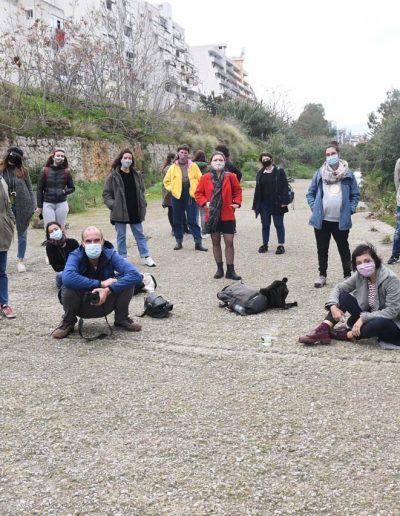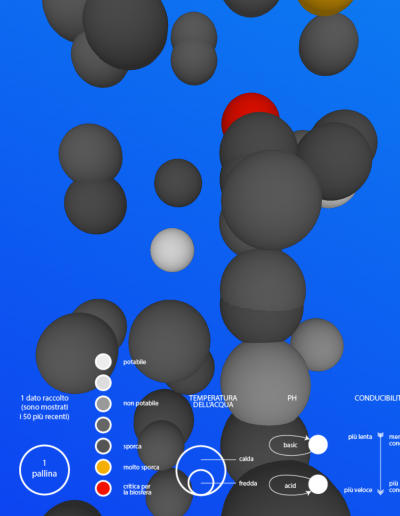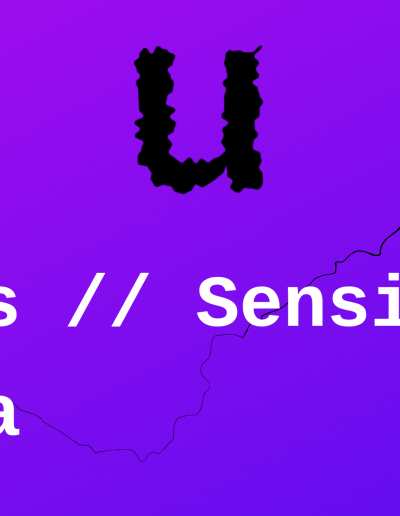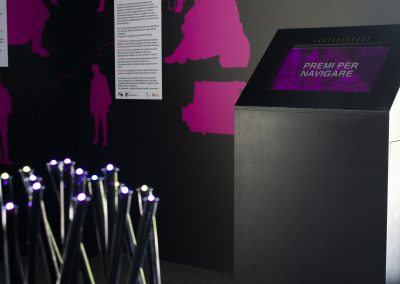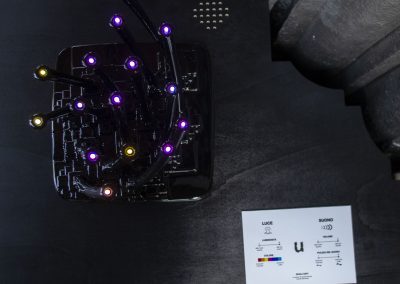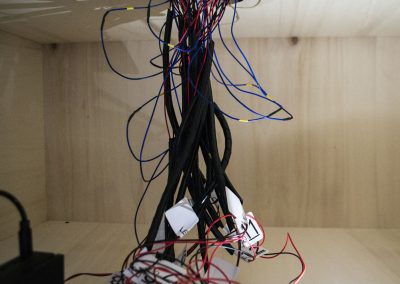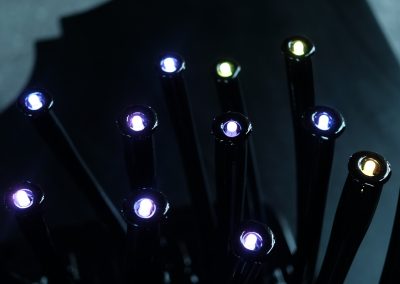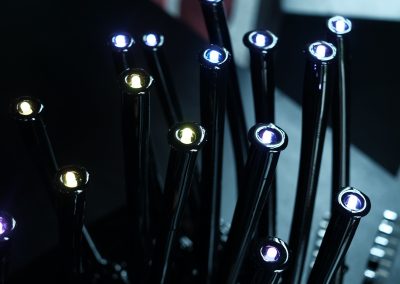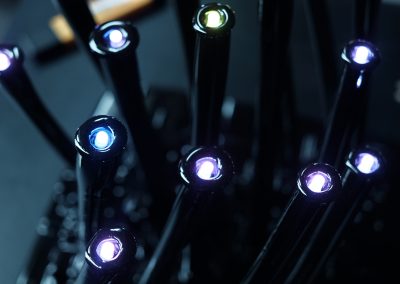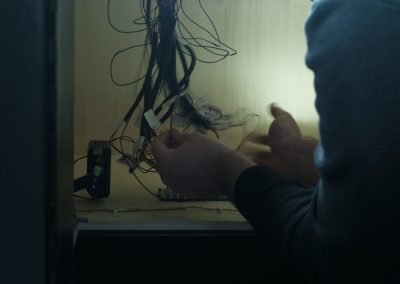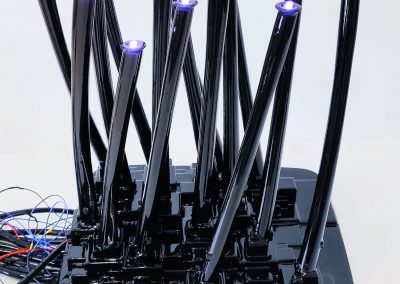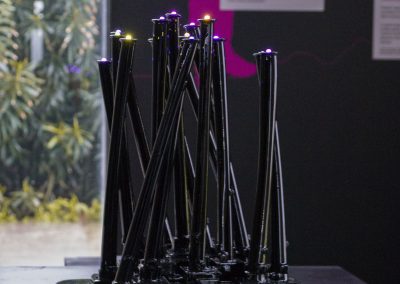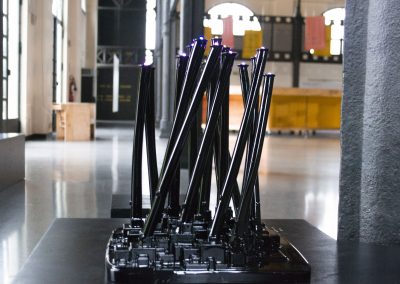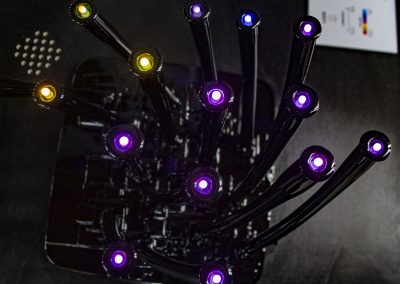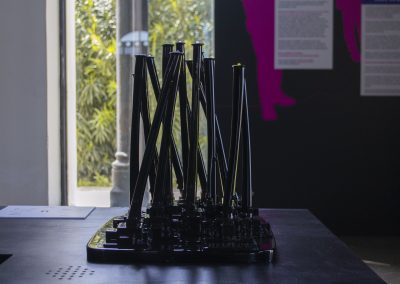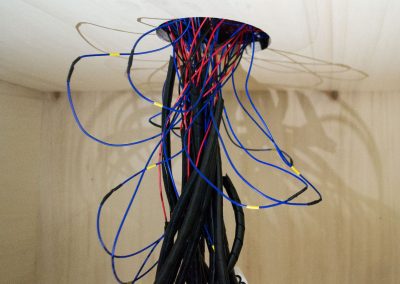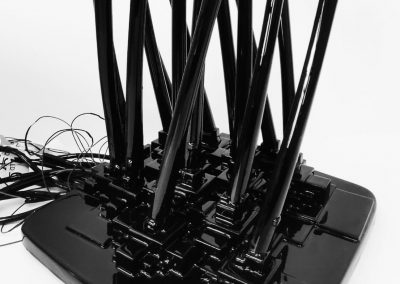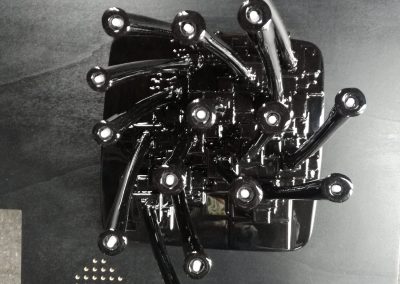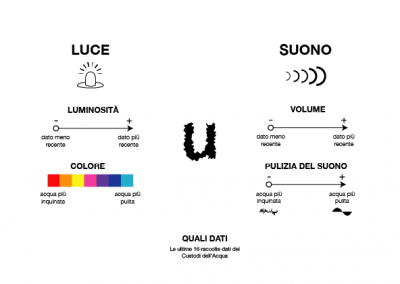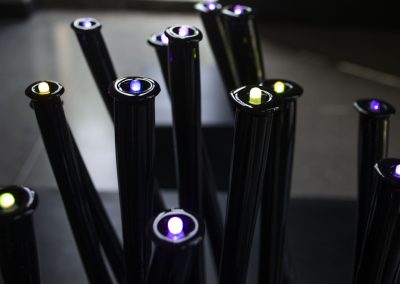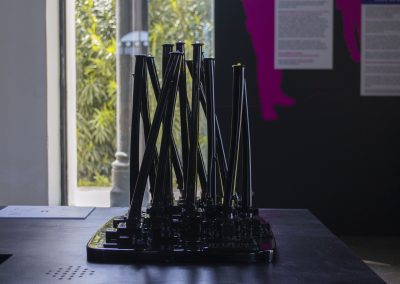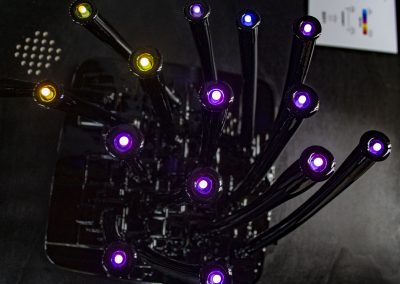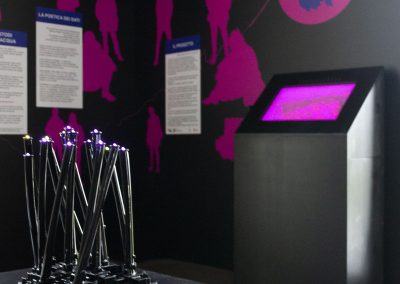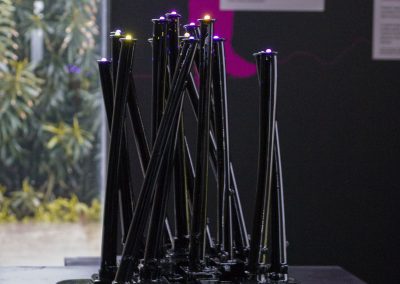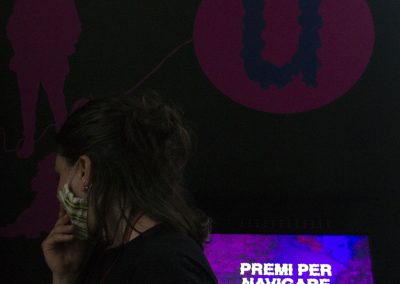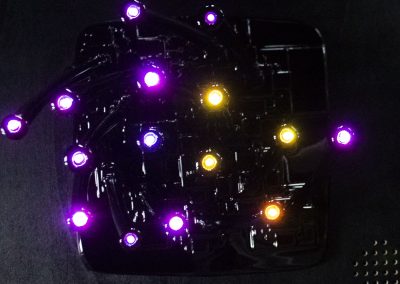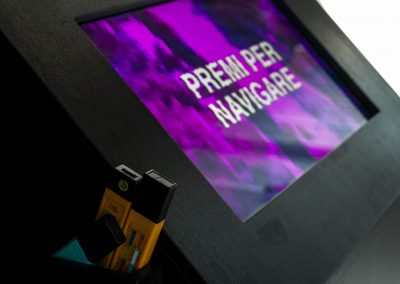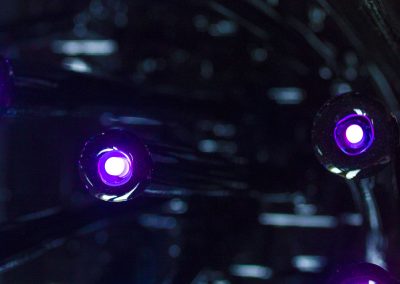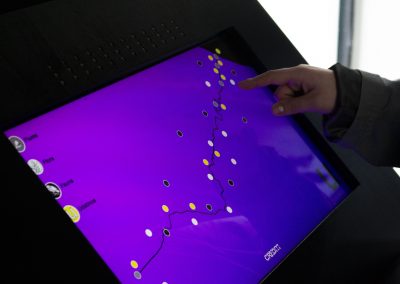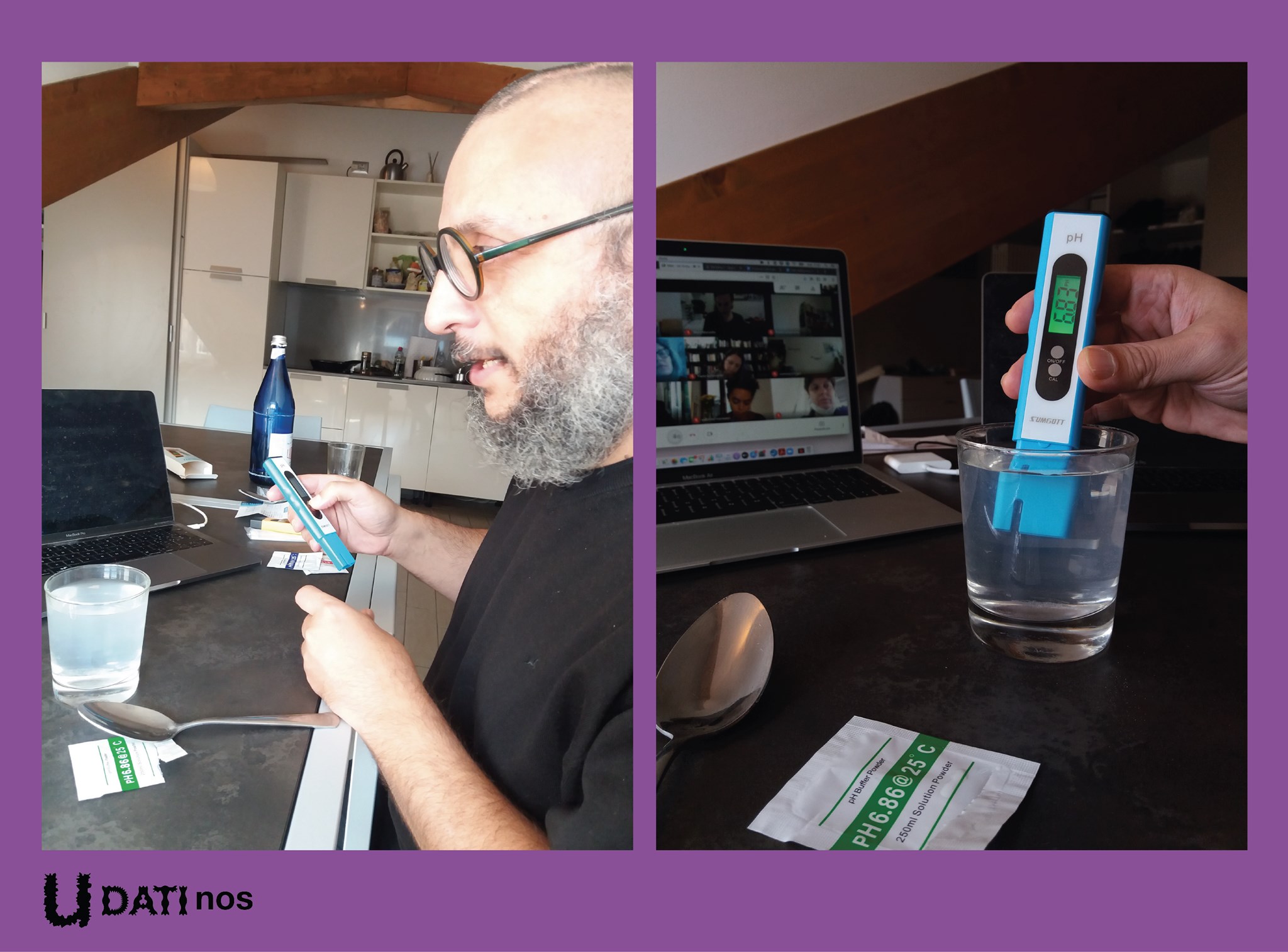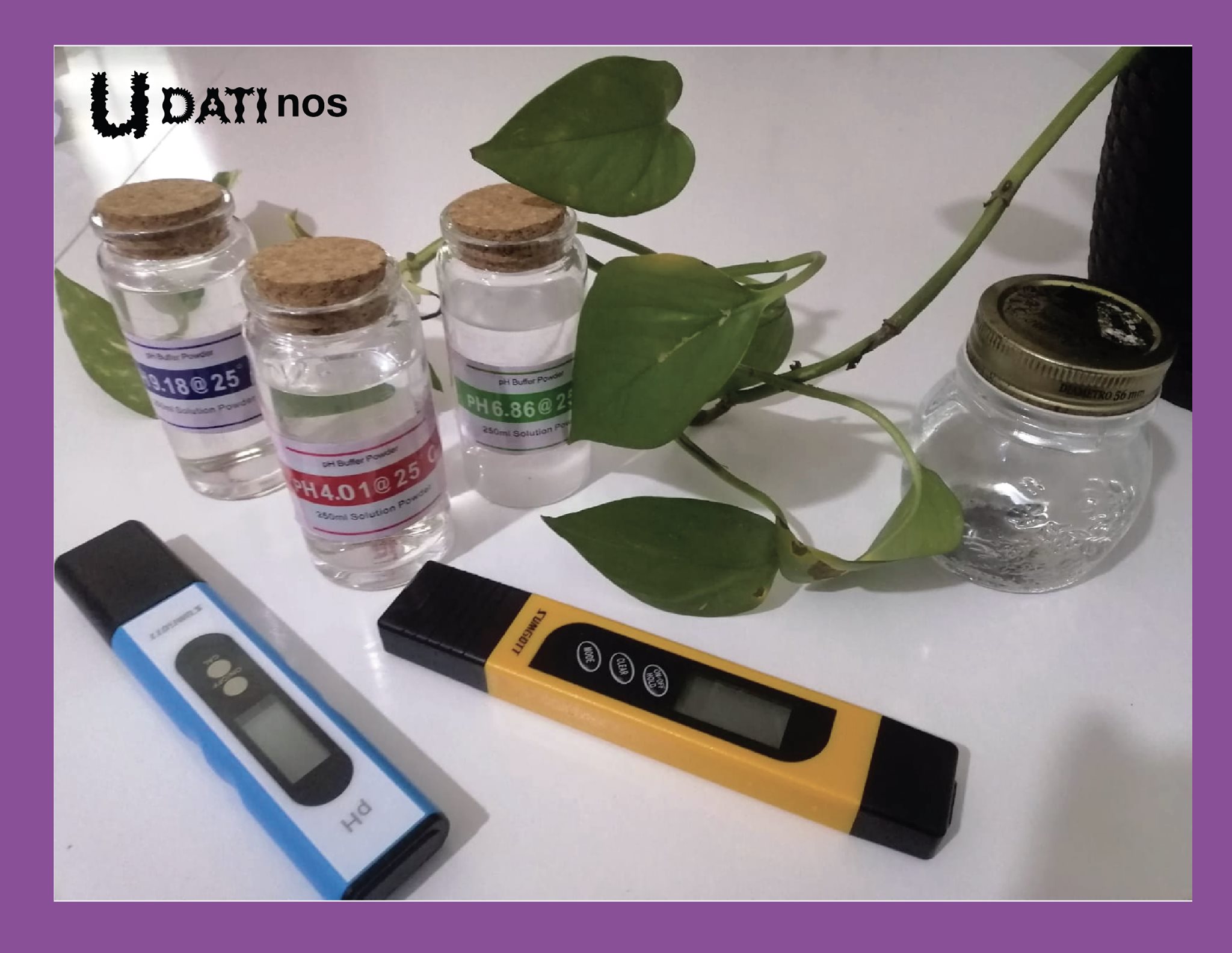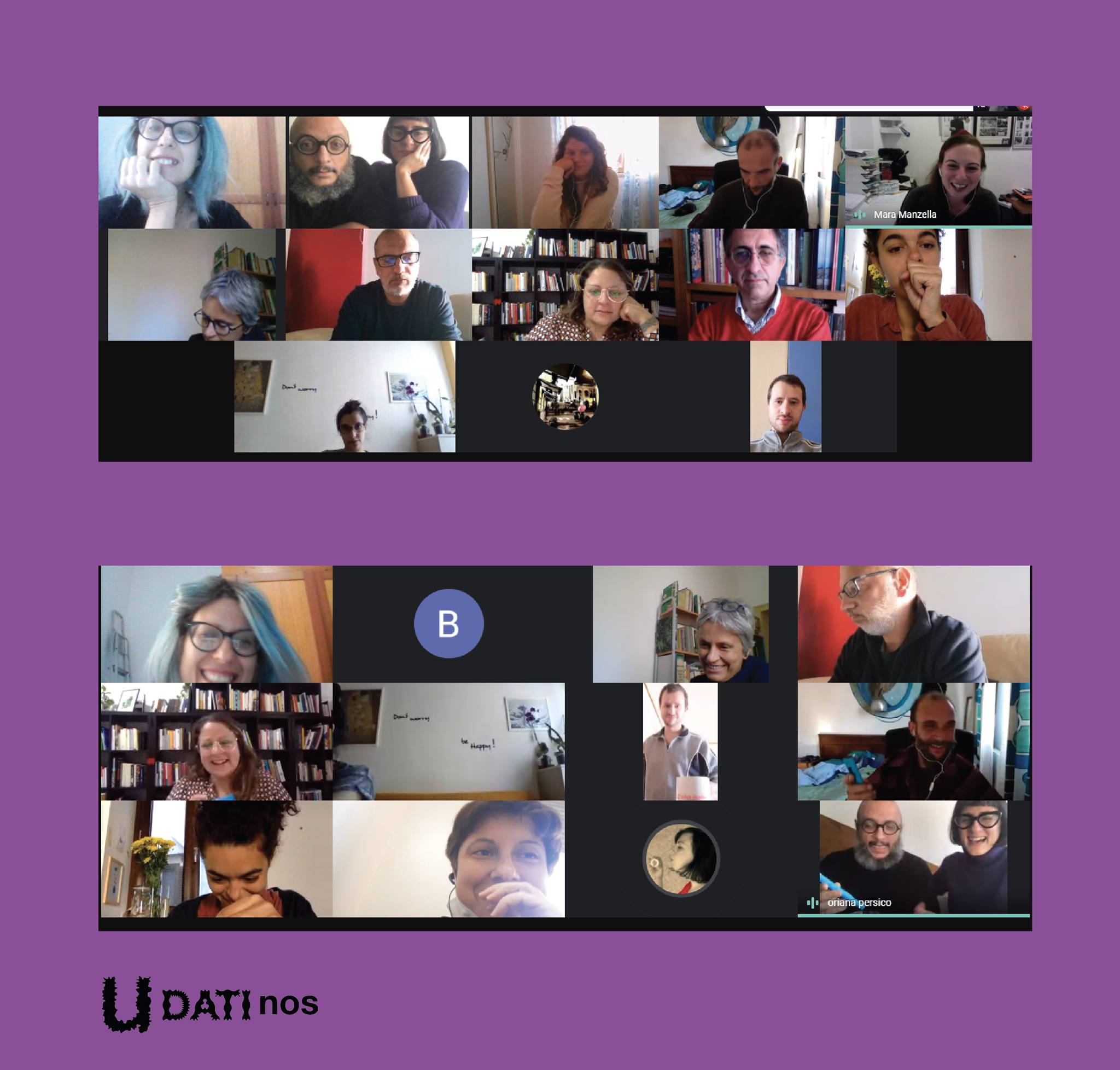U-DATInos
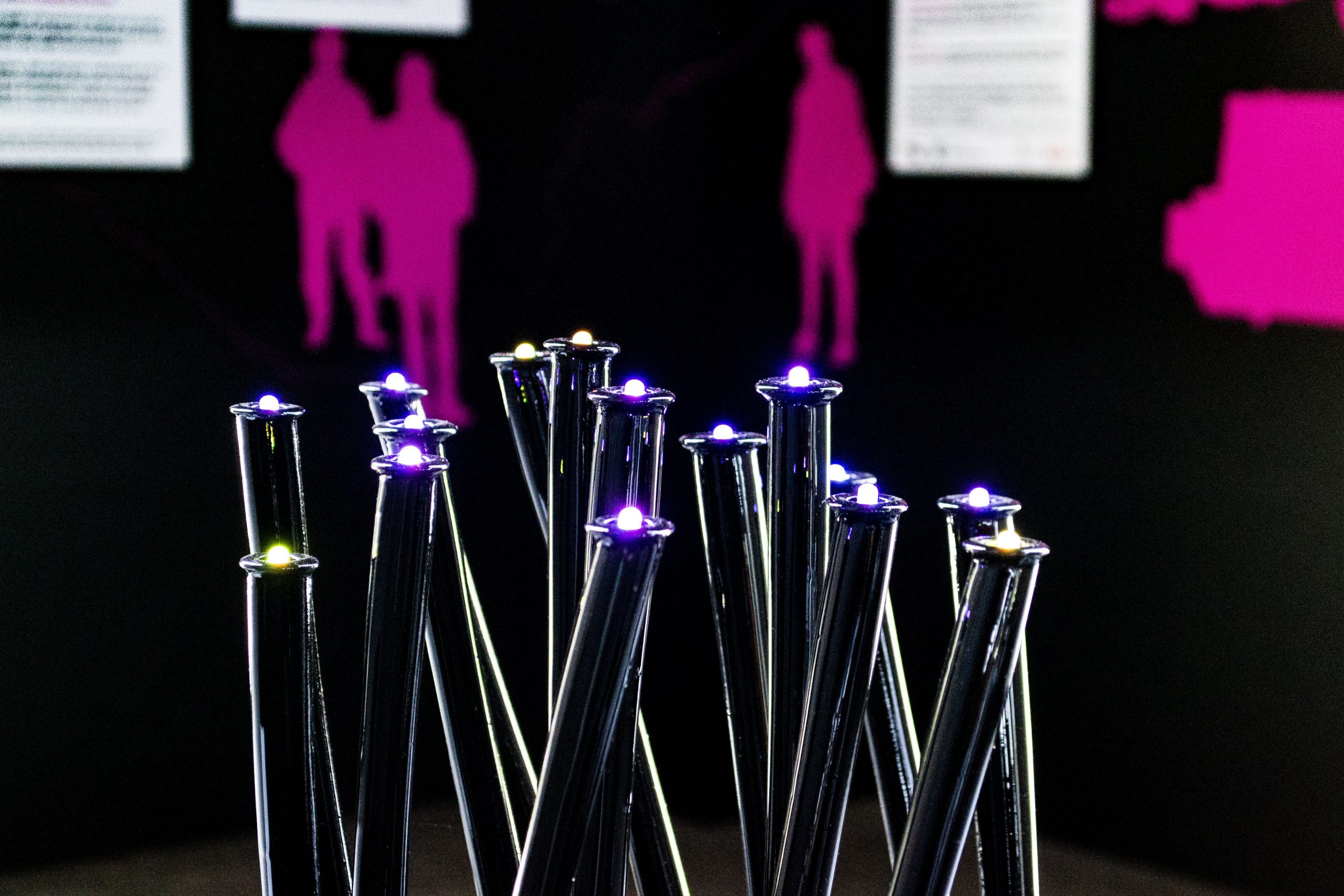
a new Datapoietic artwork to develop a new sensibility towards the health of the Oreto river in Palermo, and the creation of new social roles and rituals in the city, empowered by data and computation
“Udàtinos, from ancient greek υδάτινος: Aquatic. Consisting of water. In water.”
A neo-ritual of
Partners and Support
The project is supported by Direzione Generale Creatività Contemporanea (General Directorate for Contemporary Creativity) of Ministero per i Beni e le Attività Culturali e per il turismo (the italian Ministry of Culture), through its Creative Living Lab II edition programme.
The project partners are Ecomuseo Mare Memoria Viva and HER: She Loves Data


The Project
In Palermo/Sicily, looking over the estuary of the Oreto river, sits the Ecomuseo Mare Memoria Viva. If you stepped inside and walked to the corner that faces the river, you would find a digital plant that continuously emits pulsating lights and sounds, that info-aesthetically represents the health of the Oreto river, as captured by a group of citizens, students, reseachers and activists that have participated to the project, becoming Custodi dell’Acqua, the Custodians of Water.
This is U-DATInos, a datapoietic artwork which lets us experience a complex phenomenon of our enviroment (the dynamic state of health of the river and its ecosysystem) through data, computation and social and psychological activation, triggered by Art that is able to bring together Science, Technology and Society.
Fragile technologies: a datapoietic form of digital life
U-DATInos’ datapoietic plant is a fragile form of digital life: it will only survive if it is constantly fed by the data about the river (captured using sensors available at the Ecomuseo), which are then processed to be transformed in fresh lights and sounds.
In this way the digital plant establishes two levels of coexiting relationships, with environment and with society.
As with all living beings, life and well-being are strongly connected to the possibility to relate/connect with the environment, and through the ecosystem’s well-being. This is also true for Udatinos’s datapoietic plant: if nobody “waters” it providing fresh data, or if the status of the river’s health becomes too constantly critical, the plant respectively dies (its sounds and lights fading progressively away) or assume alarming (eg: red) critical sounds and lights (for example, the sounds emitted by the plant progressively become “dirtier” and noisy as the critical condition of the river progresses, up to the point when they become unbearable).
This establishes a meanigful parallel with the concept of the interconnectedness of the well-being of all the actors in the ecosystem: the river’s, Custodians’ and datapoietic plant’s well-being are interdependent. The plant is a new simple form of life in the ecosystem.
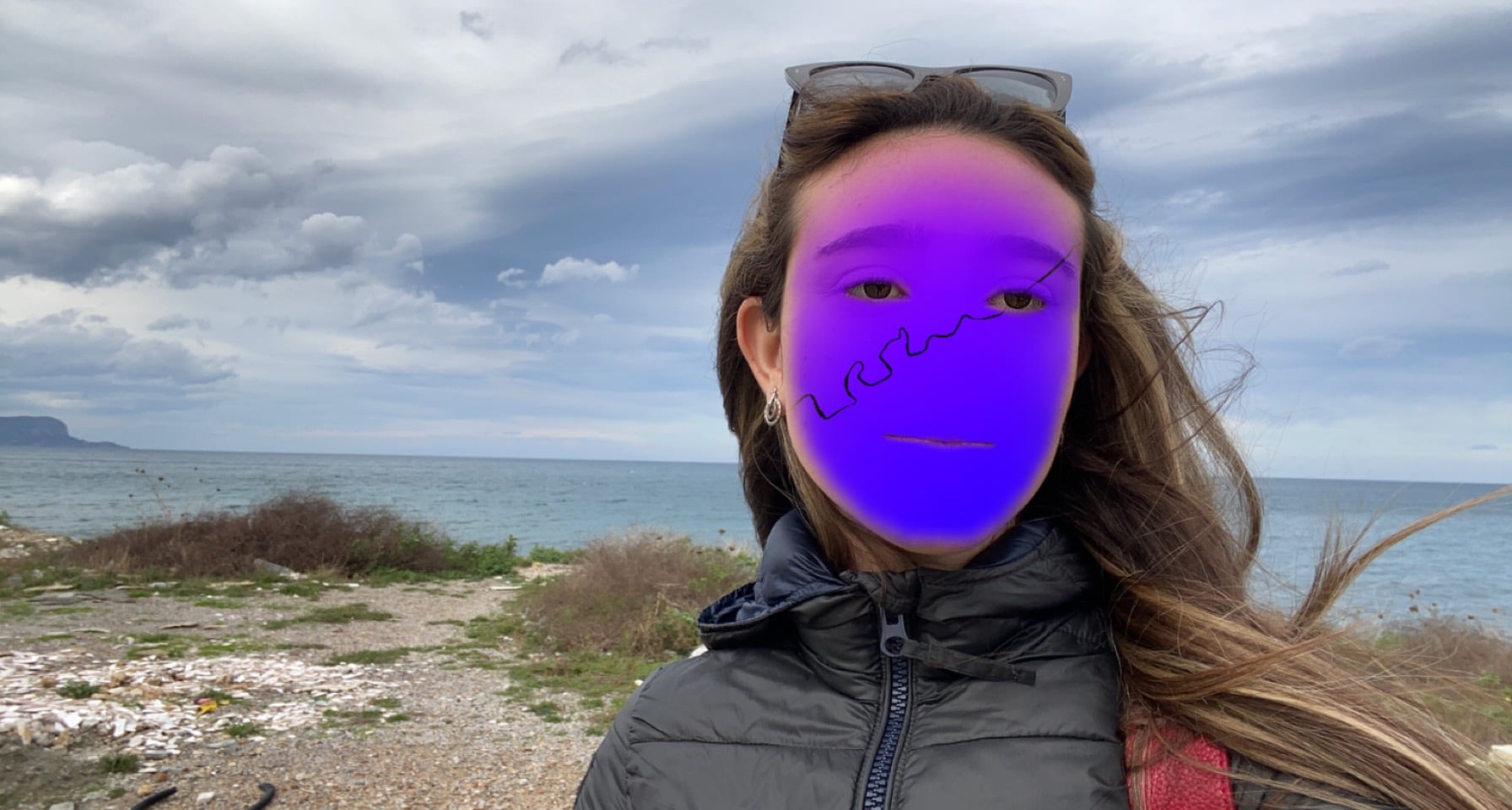
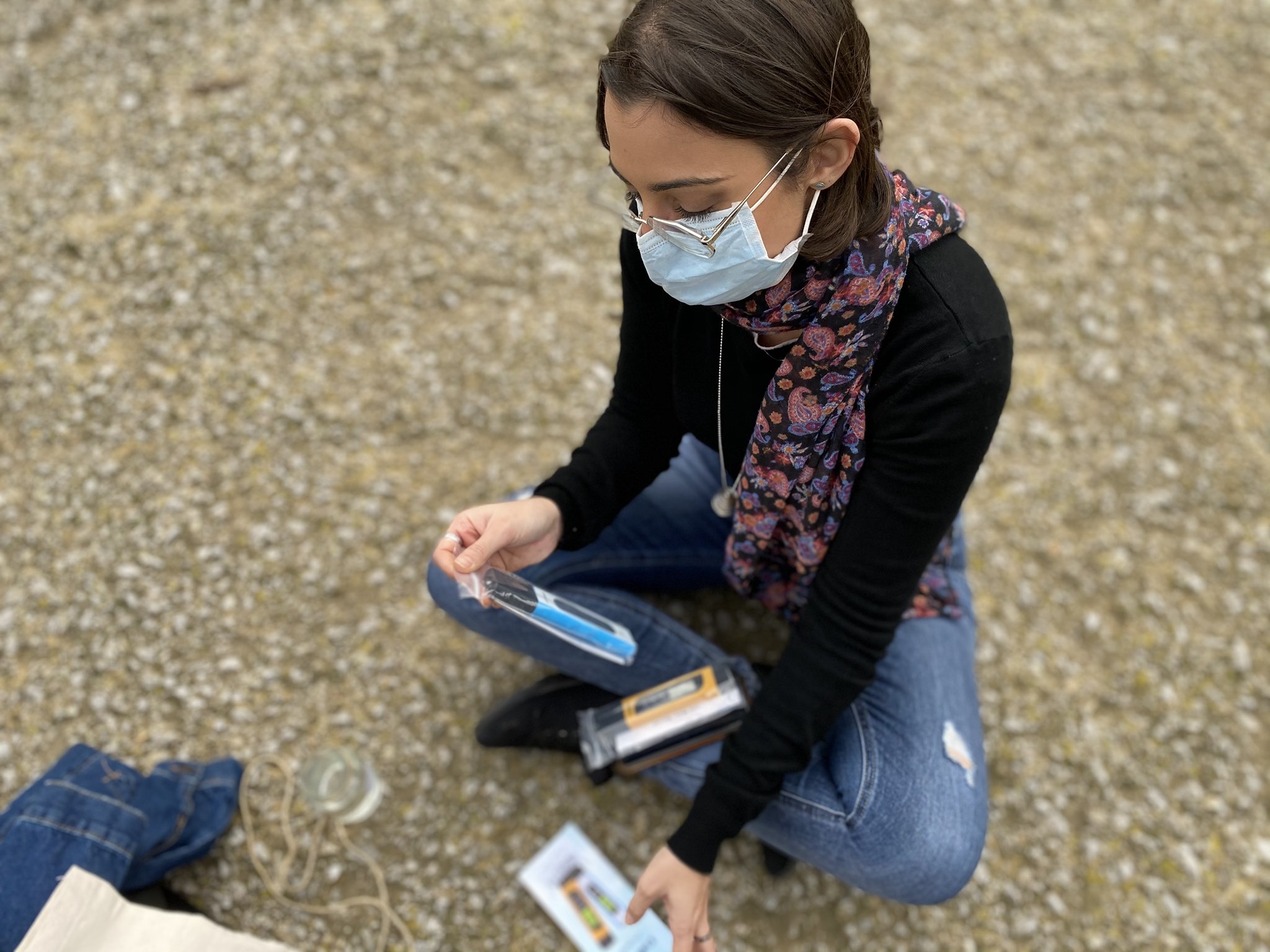
The “Custodi dell’Acqua” and their rituals
Rivers are often a void or fracture in urban texture. In cities, people rarely go into the river. They go along the river – to have a walk, or to have an aperitif –, or they even see it as an obstacle to overcome, to get to the other side through a bridge.
Historically, the presence of rivers and of their water, instead, was key to the birth of major cities worldwide, for trade, mobility, transport, hygene, health, rituals, culture, defense and more, touching many aspects of daily life and making the interconnection between our well-being and the one of the river more clear.
In the project we wanted to use Art and Technologies to trigger the emergence of a novel, re-enhanced role for the river in Palermo’s society and communities.
Thus, we facilitated the formation of a new social role in the city: the “Custodi dell’Acqua”, through open calls to citizens, students, activists, researchers.
The Custodi have developed their rituals.
“Andare al fiume a raccogliere i dati”: to go to the river to collect data, just like you would go to collect water or wild berries, alone or together on a collective data-hike.
Rituals were present also in communication: through a Lens usable from their mobile phones, the Custodi could “wear” the river on their faces on their social media communication, turning themselves into environmental superheroes, and developing a sense of belonging.
In this process, the existence of a cultural institution like the Ecomuseo proved to be of fundamental value: this is a new type of cultural institution, characterized by its proximity with its communities and which, for this, is able to closely care for them, and to consistently and reliably form hubs for all the other associations, like in our case the associations of activists who are alreading defending the Oreto river, which in the past has often found itself at the center of environmental scandals.
A project made during the COVID pandemics
This project was performed during the COVID pandemics and its global lockdowns.
From a first point of view, this made things more difficult, as all activities had to be performed remotely, from community engagement to actually and physically making the digital plant, the exhibit, the hardware etc.
But, from another perspective, this fact has been an enormous driver for innovation.
For example, for the fabrication of the datapoietic artwork and of the exhibit materials, we were able to create and support a small economy for local fablab and artisans, also contributing to sharing new approaches, techniques as well as establishing meaninful relationships and contaminations.
On the community side, this helped us to search for new ways of “being together”. Data was very useful in this: even when doing the ritual data collection alone, the fact that all the data contributed to the same database made very clear and understood the fact that the Custodi were doing something together.
In a world in which data was used to separate (during the pandemics, for example, in which data signaled if you could or could not go to school, to the movies, to your wedding, or to your loved ones’ funerals ), this data united.
Events and «onlife» interactions
WORKSHOPS
Two online workshops involved a group of 16 people among citizens and students to learn how to use sensors and to become “Custodi dell’Acqua” (Custodians of the Water) in Palermo. With this knowledge, the group used a simple web interface to generate and share data about the well-being of the Oreto river from november 2020 to April 2021.
Sensors are now part of the installation. The audience, guided by experienced museum staff who took part in the workshop, can use them to generate new data and keep the plant alive.
«DIRETTA FLUXUS»
The first event open to the public was created through a continuous series of video pills recorded and streamed between Palermo, Turin and Rome to present the project.
Wearing the U-DATInos snapcam lens, the partners talked about the project’s poetics and meaning, emerging from the waves of the Oreto river like violet aliens.
Scroll through the videos below to discover the ten episodes. Participants in order of appearance: Salvatore Iaconesi (Turin); Arianna Forte (Rome); Oriana Persico (Turin); Cristina Alga (Palermo); Paola Bommarito (Palermo); Giuliano Fontana (Palermo). Italian language.
OPENING
From April 28th to 30th, the 3-day opening coexisted with the red zone in Palermo – and the closure of the museum to the public.
The program was developed through four different events, intertwining art, data, urban regeneration.
-> On April 28th, the presentation of the artwork triggered a discussion on the present and future scenario of the regeneratation process around the Oreto river, involving the mayor Leoluca Orlando, the councilor for culture Mario Zito and the Councilor for the environment Giusto Catania, local institutions, citizens, and the artists.
-> On April 29th, a two-act seminar titled “Inhabiting Computation” investigated how we can trasform data from an extractive phenomenon into a generative one, dealing with the “green transition” and the “digital transformation” that Europe is aiming for. Among the guests, Maria Grazia Mattei (MEET ), Saveria Teston (UIA-DARE Ravenna project), Gianluca Misuraca (PoliMi), Emanuele Bompan (Renewable Matter), Simone Arcagni (UniPa);
-> On April 30th, the closing event was a dialogue between curators and artists to discover different poetics coming from other international art projects dedicated to rivers and water, looking forward to posible future collaborations; the day’s events were completed by a focus on the digital fabrication of the artwork with the local partner, Fablab Palermo.
The four events are recorded and available below in Italian.
VIZ – The installation goes online
To overcome the closure of the event due to Covid pandemics and to ensure the fruition of the artwork, a real-time data visualization was created by our research center with the artistic direction of Salvatore Iaconesi.
The visualization was accessible for the three days event showing the data generated by Custodi dell’Acqua during the project – and allowing the audience from all over the world to connect with the Oreto River to understand the welll-being of its water.
Below is a screenshot of the visualization.
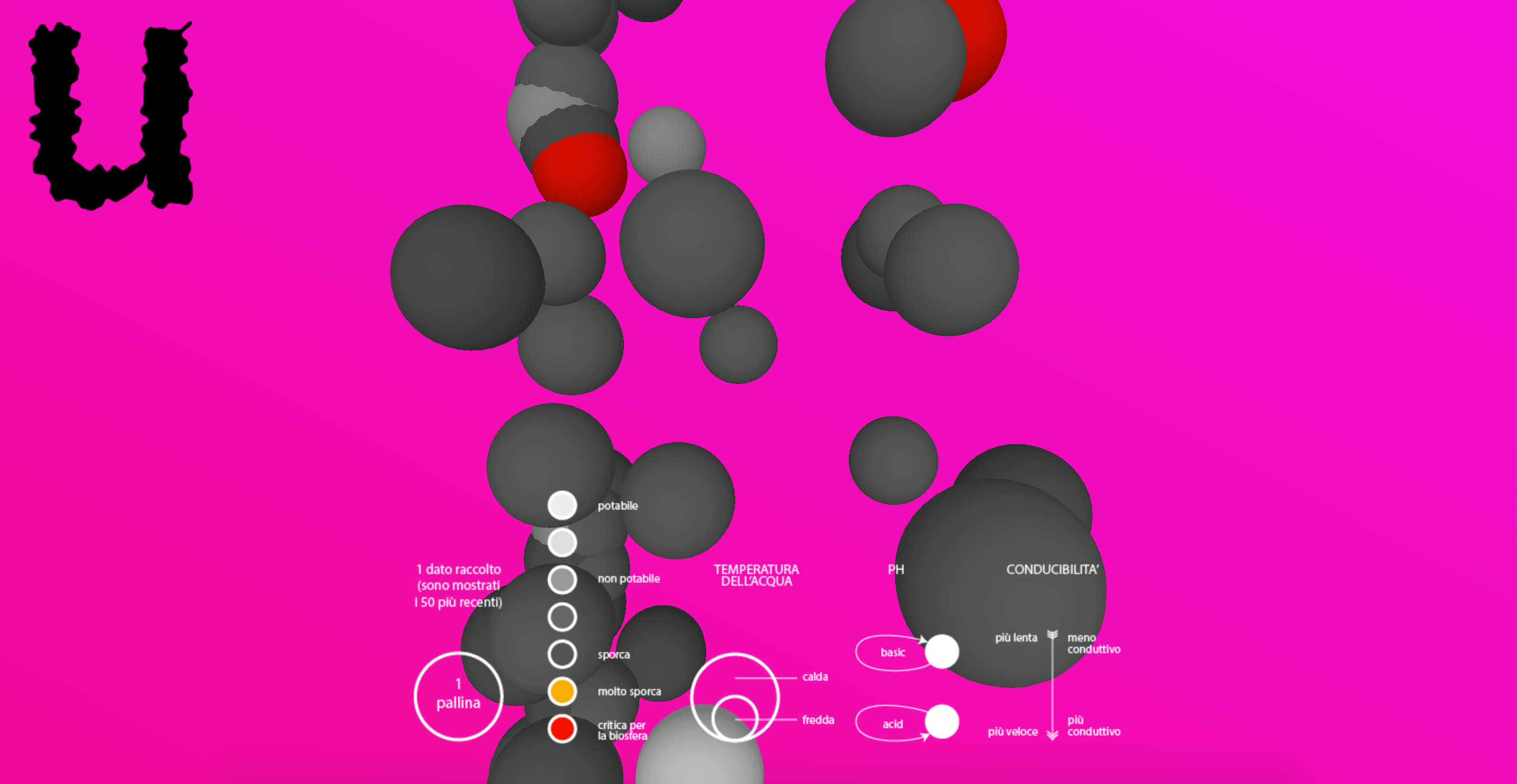
PRESS
FULL CREDITS
PROMOTED BY
Direzione Generale Creatività Contemporanea del Ministero della Cultura
THROUGH ITS PROGRAM
Creative Living Lab II Edition
LEADING INSTITUTION
Ecomuseo Urbano Mare Memoria Viva
SCIENTIFIC AND TECHNOLOGICAL PARTNER
HER: She Loves Data
PROJECT STAFF
Concept: Salvatore Iaconesi, Oriana Persico
Curator: Arianna Forte
Project manager: Cristina Alga
Community Manager: Paola Bommarito
Digital Fabrication: Pierangelo di Benedetto / Fablab Palermo
Multimedia interface for the exhibit: Valerio Veneruso (Design), Luca Conte (Creative Coding)
Press office: Anna Nosari
«CUSTODI DELL’ACQUA» (alphabetical order)
Filippo Brugnone, Salvatore Bucchieri, Sergio Calabrese, Francesca Caleca, Giulia Casamento, Greta Cazzola, Giulia D’Audino, Roberta La Mantia, Lorenza Li Vigni, Mara Manzella, Fabio Militello, Brigida Pedone, Nathalie Rallo, Marco Rigano, Clara Sorce
TECHNICAL SUPPORT
Giuliano Fontana, Vincenzo Italiano, Valentina Mandalari, Elio Lo Mauro
EDUCATIONAL CONTENTS ABOUT THE ORETO RIVER
Plants: the images and information contained in the multimedia exhibit are from “Acta Plantarum” and are distributed with a Creative Commons Licence © accessible on www.floraitaliae.actaplantarum.org Revisions: Dott. Marco Giordano, expert bothanicist.
Animals: the materials in the multimedia exhibit are by Lipu Palermo, coordinated by Giovanni Cumbo. Texts by Marina Cani, Giulia Cosimi, Giovanni Cumbo. Images by Giovanni Spinella. Audio by www.xeno-canto.org with a Creative Commons Licence © Xeno-canto Foundation.
WITH THE FOUNDAMENTAL SUPPORT OF
Comitato Salviamo L’Oreto,
Comitato Promotore per il Contratto di Fiume e Costa Oreto,
Forum Contratto di fiume e costa Oreto
